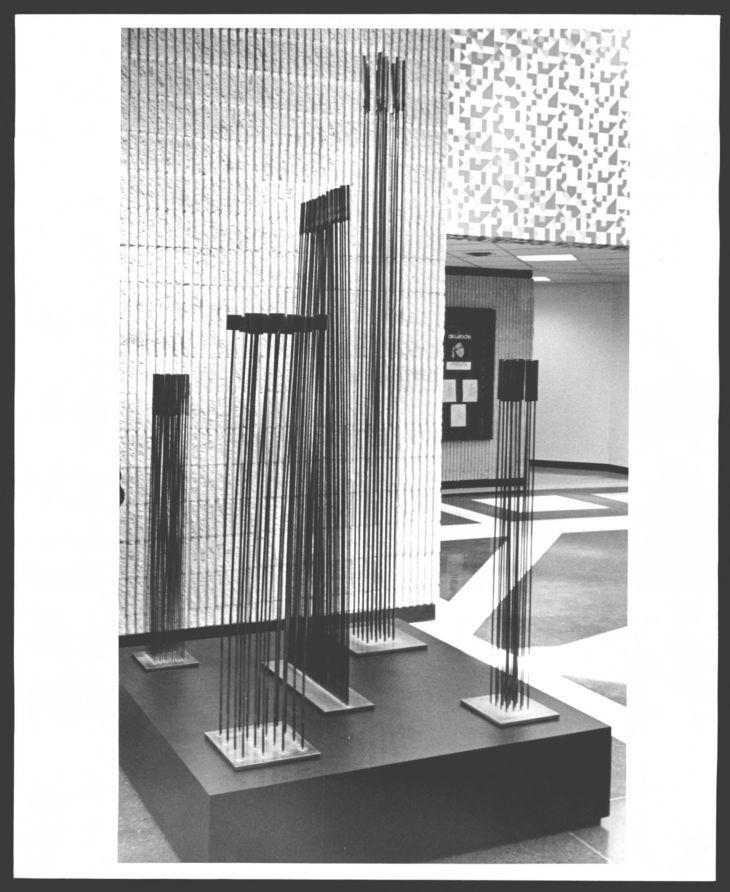The University of Akron (UA) is home to many unique pieces of art, but none quite like the “Tactile Sounding Sculpture,” located in Guzzetta Hall’s atrium. The piece was created by renowned metal sculptor Harry Bertoia, a pioneer in the world of sound sculpture and the five-piece metal sculpture was originally meant to be played.
.jpg)
Originally designed for Guzzetta’s opening on March 31, 1976, the entire piece consists of five separate sculptures arranged on a stone base. Each sculpture features vertical metal rods, carefully spaced in a grid pattern and topped with small metal cylinders. When the rods are bent and released, they sway and collide, producing a metallic harmony. Because the rods vary in height, spacing and thickness, each one produces a slightly different sound, creating a beautiful melody.
Bertoia was an Italian-born artist and furniture designer, known for revolutionizing the metal sculpting space. He is also well known for creating the Diamond chair, alongside the Sonambient Sculptures, a series of metal artworks designed to produce sound, much like the Tactile Sounding Sculpture at UA. Over his career, he crafted more than 50 public sculptures, many of which remain standing across the U.S. today.
For decades, students and visitors interacted with the sculpture. However, over time, the rods began to deteriorate from continuous bending and pulling. The foundation and rods became severely damaged as a result.

Recognizing the sculpture’s importance, the UA Women’s Committee stepped in to fund its restoration. In 2009, Michigan-based sculptor Ken Thompson was tasked with bringing it back to life. He carefully replaced damaged rods, reinforced the structure with a stone foundation and cleaned the entire piece. On April 29, 2009, the sculpture made its grand return to Guzzetta Hall during a special unveiling ceremony.
Today “Tactile Sounding Sculpture” remains in Guzzetta Hall, a testament to Bertoia’s creativity and the University’s commitment to preserving art. However, due to its delicate nature, it is no longer played. Though its song may have faded, its legacy endures, reminding visitors that art is not just meant to be seen but, sometimes, to be heard.
Story by Beau Balizet '25
